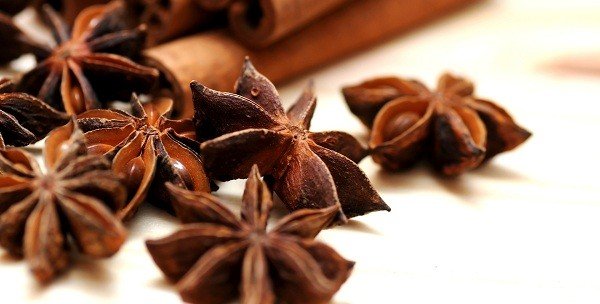Anise

Anise is an annual herbaceous plant of the umbelliferae family, known to people since the time of Avicenna and Hippocrates, and as a spice it has been cultivated for thousands of years. It reaches 50 centimeters in height.
It grows wild in Greece and is cultivated practically in all countries of the world. The roots, seeds and ground part of the plant are used for medicinal purposes.
The stems of the plant are collected while still with unripe fruits/seeds/. They are cut and dried in dry and dark places.
Composition and caloric content
100 grams of anise contain 9.5 grams of water, 17.6 grams of protein, 15.9 grams of fat, 14.6 grams of vegetable fiber, 35.4 grams of carbohydrates, 7 grams of mineral content and the following vitamins – thiamin /B1/, riboflavin /B2/, niacin /B3/, pantothenic acid /B5/, pyridoxine /B6/, folic acid /B9/, ascorbic acid – vitamin C; macroelements – phosphorus, sodium, magnesium, potassium, calcium; trace elements – zinc, selenium, copper, manganese, iron.
The calorie content of anise is 337 kilocalories per 100 grams of product, therefore its excessive use can become a cause of obesity.
Anise – useful properties
In folk medicine, anise is usually used as an analgesic, expectorant, disinfectant and antipyretic/lowering body temperature/means.
The beneficial properties of the spice also include improving intestinal peristalsis, the secretory function of the respiratory tract and the gastrointestinal tract.
Anise seeds are highly valued and are part of laxatives and antiperspirants. Thanks to its properties, anise is also used in the production of perfumes, alcohol and food.
Decoctions of anise seeds are used as medicines for intestinal spasms, inflammatory processes in the gastrointestinal tract, flatulence, constipation, gastric bleeding, painful and irregular menstruation, and also to improve digestive processes.
>
For lactating women, anise seed tea increases the amount of breast milk produced.
Infusion of the stems and seeds of the plant relieves liver function and that of the pancreas. It is used for cough, bronchitis, asthma, pneumonia, shortness of breath, tracheitis and laryngitis.
The healing properties of anise contribute to the dissolution of sputum, so it is indicated for whooping cough in children. Decoction of anise seeds has a beneficial effect on a hoarse voice.
And for heartburn, a decoction of anise seeds is also recommended, but mixed with egg white.
The benefit of anise as a diuretic is known for nephrolithiasis and other diseases of the kidneys and bladder.
In terms of its healing properties, anise is inferior to cumin and fennel, but it has a much more pleasant taste. Therefore, it makes a delicious and useful tea.
Anise oil can be obtained, which is a yellowish liquid with a pleasant spicy-sweet taste. Anise oil is used as part of various combined potions to stimulate the production of breast milk in women who have recently given birth and as a cough syrup.
It is also used as an expectorant and antiseptic to treat colds and inflammation of the upper respiratory tract.
The use of anise oil in scurvy, loss of voice, reflux and in inflammatory processes of the tonsils and gums is demonstrable.
Another useful property of anise is that its characteristic aroma is not tolerated by insects, so it is often used to fight bed bugs, flies, mosquitoes and lice. The plant is also an effective remedy against bad breath and is suitable for smokers.



